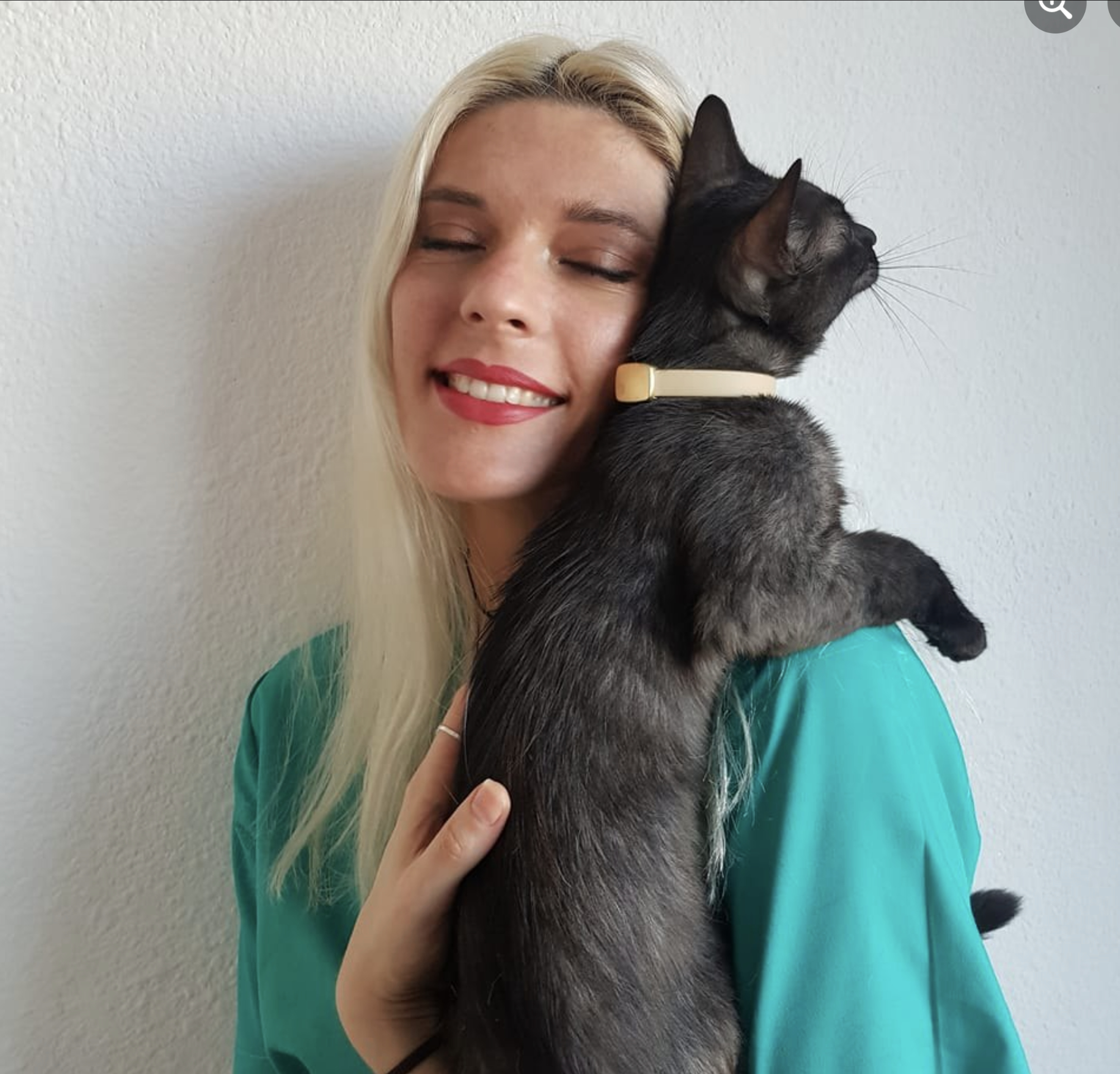Cats, like all felines, are obligate carnivores, which means they must eat meat and meat by-products. But commercial food and treats, in addition to meat and/or meat by-products, also contain vegetables, grains, and other ingredients that do not hold much nutritional value. In the long run, these foods and treats can lead to food allergies, gastrointestinal disorders, or urinary problems.
Some specialists also say that poor-quality commercial cat food can even lead to cancer1 due to all the unnecessary ingredients. Overall, cat food that contains non-nutritional ingredients can make your pet sick, leading to suffering and unnecessary expenses at the vet.
As a veterinarian, I have dealt with cats suffering from various health problems due to the diet they ate. To avoid the consequences of poor-quality food, you can try a freeze-dried cat diet, which is a healthy alternative to most commercial pet foods.
Before talking about the pros and cons of freeze-dried cat food, let me tell you a little about the manufacturing process. So, how does the freeze drying process work?
What is Freeze-Drying?
Freeze-drying, or lyophilization, involves the sudden freezing of food and the extraction of water vapor with the help of a suction device. The product obtained is dehydrated food. The temperature of the food is lowered below the freezing point, and then the vapors are extracted through a high-pressure vacuum.
The manufacturers do not use any preservatives, and the process can take up to two days. Essentially, the freeze-drying process preserves the nutritional value of foods and, at the same time, gives them a longer shelf life. The food also keeps its physical structure and can be rehydrated later before use.
This process was first used during the Second World War for drugs that required low-temperature storage conditions. Later, the freeze-drying process was extended to various products, including pet food.
In other words, the freeze-drying process is a safe process that ensures better preservation of food products without altering their nutritional value.
Top 5 Benefits of Freeze-Dried Cat Products
1. Retain the Nutritional Value Better Than Foods From Other Manufacturing Processes.
Due to the minimal processing of the ingredients, freeze-drying preserves the essential nutrients almost entirely. The resulting products are clean, without preservatives, dyes, or other ingredients without nutritional value (e.g. vegetables, fruits, and cereals). Thus, cats will consume a diet similar to a natural one, and your fluff ball will have a healthier life.
In other words, cats receive all the essential nutrients their body needs if they consume these types of products.
Commercial cat food is usually ultra-processed and lacks essential nutrients. Cats feel full and gain extra weight due to fillers and carbohydrates, which are ingredients that contribute nothing to their nutrition. For these reasons, freeze-dried food is a healthier alternative to traditional cat food. If you want to try it, choose those that contain only high-quality ingredients (meat, bones, and organs).
2. Less Poo and Less Stinky Poo
Freeze-dried products contain less or zero fiber compared to traditional food, which translates into less animal waste. Wild felines do not eat fruits and vegetables, but they do consume the stomach contents of the animals they hunt. Commercial cat food usually has added fibers in its composition to help with cats’ digestive function. But too much fiber in your cat’s diet can promote intestinal gas, abdominal bloating, and cramping, which lead to more waste.
Freeze-dried cat food is made with natural and healthy ingredients that allow your cat’s body to absorb more essential nutrients (vitamins, minerals, and amino acids). As a result, your pet’s excrement will be smaller and less smelly.
3. Make Taurine Easier to Absorb – An Amino Acid That Helps With Digestion.
Commercial wet or dry cat food often contains ingredients that can harm your cat in the long term. Fruits, vegetables, and grains cause an excess of soluble carbohydrates and prevent the absorption of taurine – an amino acid vital to your cat’s health that is found in meat. Cats can’t synthesize taurine, so they have to get this amino acid from their diet.
Cats need taurine for metabolizing energy and for healthy digestion. This amino acid is also important for brain development in kittens, sexual organs and heart health. When cat food has a low taurine content, a deficit usually occurs. Taurine deficiency can have severe consequences on your cat’s health. For example, it can lead to dilated cardiomyopathy (DCM)2, a relatively rare heart disease in cats. To avoid nutritional deficiencies, it is best to feed your cat a proper diet.
4. Help With a Sensitive Stomach
Because freeze-dried pet food has no fillers, cereals, or other useless ingredients, it promotes healthy digestion. The common ingredients found in traditional cat food, especially in poor-quality diets, can lead to stomach upset/food intolerance (e.g. diarrhea, vomiting, and bloating).
Also, cats cannot digest cellulose, a major fiber component in cereal grains. Grains are often added to traditional cat food just to add volume and are not a nutritious ingredient. Over time, cats can develop a sensitivity to grains, which can lead to skin and gastrointestinal problems. Freeze-dried products do not contain grains, which makes them easy to digest.
5. Help With Maintaining a Healthy Weight.
Poor quality food usually leads to obesity in cats because of the fatty foods and carbs. Cats become obese when the food they eat turns into fat instead of being metabolized. The fat is stored in different organs or areas, such as the liver, heart, arteries, or joints. The health risks of obesity are numerous –
- The risk of developing diseases such as diabetes, hypertension, joint problems, various forms of cancer, heart disease, etc.3
- Weakening of the immune system;
- Hepatic lipidosis, a disease that can be fatal to cats;
- Joint and locomotion problems.
Because freeze-dried diets contain few ingredients and are minimally processed, you can keep your cat at an ideal weight. These products have more animal protein and less fat and carbohydrates than wet or dry food.
Cons of Freeze Dried Cat Food and Things to Keep In Mind
Here are some things to consider when you decide to feed your cat a freeze-dried diet:
Higher Costs
Compared to traditional wet or dry food, freeze-dried diets can be a little pricey. But the price shouldn’t matter when your cat’s health is at stake! In the long run, you will spend less money because your cat won’t need the vet so often. Think of this as an investment.
Nutritional deficiencies
Make sure it says “complete and balanced cat food” on the package. Some manufacturers make treats instead of complete freeze-dried cat food. Treats make a great snack between meals or when you want to reward your cat during training. But treats aren’t considered complete food because they lack some essential nutrients, and your cat can get sick.
Wet or Dry?
You can feed your cat with the freeze-dried bits as they are or add warm water or broth to rehydrate them. It is better to rehydrate because cats are known not to be fans of drinking water (not all of them). But be careful with how much liquid you add. Adding too much water or broth can lead to diarrhea. So it’s best to add just enough liquid to soften the dry bits without making a soup out of your cat’s food.
Risk of bacteria development
The freeze-drying process is one that reduces the initial number of bacteria right from the start. But this does not mean that once the food is rehydrated, bacterial development is not possible. If you choose to rehydrate the freeze-dried bits, keep in mind that they must be consumed within a maximum of two hours. To avoid bacterial growth, you can keep the leftovers in the fridge or dispose of them properly.
Gastrointestinal disorders due to changing your cat’s diet
If you choose freeze-dried food but your cat is still on a traditional wet or dry diet, ensure a smooth transition. This means you will add the freeze-dried food gradually to your cat’s diet. Sudden changes in your cat’s diet generally lead to digestive problems (vomiting and diarrhea).
Lastly, always feed your cat according to the instructions on the package or your vet. If you don’t want to make your cat fat, follow the feeding guide on the package or talk to your vet.
Conclusion
Prolonged shelf life, better absorption, no grains or fillers, and less poo are just some of the benefits freeze-dried products have compared to traditional cat food. But like any food product, they also have some downsides. Make sure you talk to your veterinarian before changing your cat’s diet. This way, you can avoid certain health problems.


